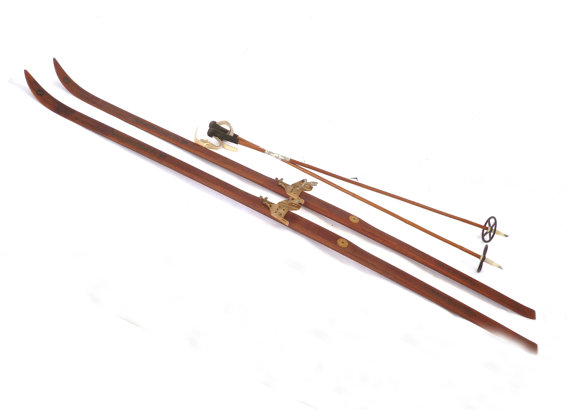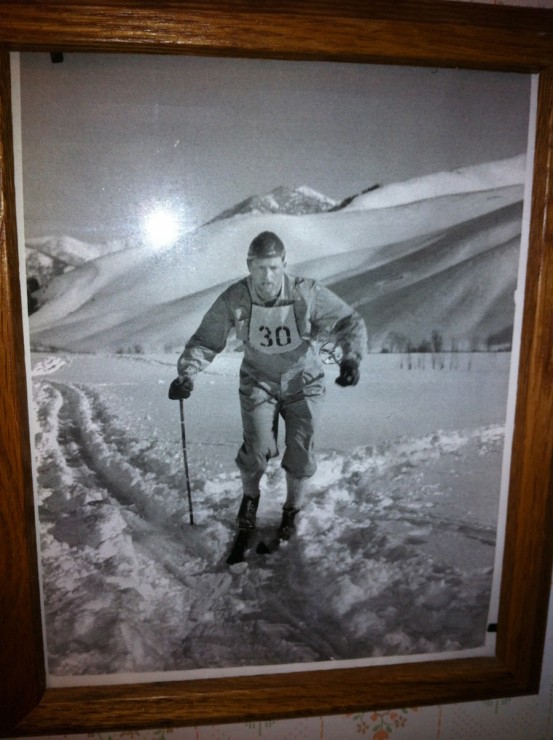
Longer, slower, wider. That could be the slogan for future World Cup seasons based on the outcome of the International Ski Federation (FIS) Cross Country Committee’s spring meeting. According to a press release, as part of a test event this coming season in 2016/2017, World Cup competitors will be required to use wood skis and bamboo poles for two of the stops on the circuit and a total of five days of racing.
For ski prep, modern high-tech waxes will also be banned for these World Cups. Only pine tar and non-fluorinated klister and hard wax will be permissible.
“FIS is concerned about the rising cost of competing on the World Cup and at the Olympics,” FIS Cross Country Racing Director Petter Menagerie said in an interview. “It’s our hope that this will trickle down to the club level as well.”
The test events, including all three days of the season-opening Ruka Triple mini tour in Kuusamo, Finland, and Holmenkollen 30/50-kilometer classic races in Oslo, Norway, later in the season, are also expected to boost television ratings and build hype for the pre-Olympic year.
But according to a source who requested anonymity, the real reason for the wooden-ski mandate is FIS’s consternation over the success of athletes double poling to podiums in distance classic races. That hypothesis could not be confirmed by press time.

The announcement caught the industry by surprise.
A spokesperson for Fischer Sports said the company was “aware of the rule changes and researching the most state-of-the-art methods to comply with the new rules.”
Asked when consumers could expect a prototype, the spokesperson said, “We’re on it.”
Woodski roller ski president Peter Breu admitted that he has been in negotiations with unnamed ski companies wishing to learn of the magic of Woodski’s laminated roller ski shafts.
“I won’t name names, but you would know them all, and they are all dying to learn what we know about the qualities of wood…,’ ” Breu said.
“As a nordic buyer at Gear West, this new rule change has me concerned,” said Matt Liebsch, director of nordic sales and service at Gear West in Long Lake, Minn. “At SIA [SnowSports Industries America], I was not shown any wood skis but luckily our owner, Brian Knutson, has a garage full of old wooden racing skis. I have been fielding calls daily from top World Cup teams inquiring about buying the pair he won the Minnesota State meet on back in 1978. At this time Brian is still unwilling to sell that pair and his childhood memories attached with it.”
Athletes are taking novel approaches to fill their quivers for next season. U.S. Ski Team member Sophie Caldwell has asked her grandfather John Caldwell to give her his skis from the 1952 Winter Olympics. But she’s had to fight with John Caldwell’s nephew Zach, who wants the same skis to test stone grinds.
1960 Olympian Joe Pete Wilson announced that he plans to sell sell his quiver of wooden skis on eBay to the highest bidder. Sites like Etsy and Craigslist are also reportedly preparing for increased demand in antique equipment.

In Farmington, Maine, the Maine Ski Hall of fame was burglarized on Thursday night. Thieves stole several pairs of wood cross-country and jumping skis. In Finland last week, the Lahti Ski Museum was broken into and Laasanen antique skis were stolen.
FIS Nordic Combined is anticipated to initiate similar test events in its World Cups.
“I’m all about making the sport simpler, but there’s also something to be said about evolving technology,” U.S. Nordic Combined Head Coach Dave Jarrett said. “Safety on the [jump] hill should be a primary concern. Are we really going to go back to the dark ages?”
The International Biathlon Union (IBU) has not yet indicated it will go down this road.
“For sure, retro is a thing,” said US Biathlon’s Lowell Bailey, a member of the IBU athlete advisory committee. “But wooden skis? How are you going to skate on those? What’s next, black-powder biathlon?”
But US Biathlon President and CEO Max Cobb had a different take.
“Wood skis are a great idea, at least for the novelty factor if nothing else,” he commented. “I think biathlon should take it further, at least for one of the World Cups, to pay homage to its origins. At the next IBU general meeting, I’m going to recommend black-powder muskets in place of the current biathlon rifles, and buckskin race suits and coonskin caps!”
FIS did not confirm whether there would also be a limit on the number of skis an athlete can carry around on the World Cup circuit. However, in an effort to make the sport greener, competitors will only be offered a single replacement pole to be used for the entire season. This could mean many athletes competing with only a single pole during the second half of the season — and for the designated World Cups, it will have to be bamboo.
“I think the bamboo-pole requirement is a great way to help keep the traditional stride and glide technique alive although I will miss the strength and lightness of carbon fiber poles,” Brian Gregg wrote in an email.
With its line of tar-based kick waxes, Finland’s Start appears to be the best-situated for the new regulations. Gallium, Holmenkol and Swix are reportedly joining forces in a lawsuit against the pine-tar rule, to be heard in the Court of Arbitration for Sport.
Peter Minde
Demand planning professional with expertise in wine import and distribution. Father, husband, skier, trail runner, writer.



